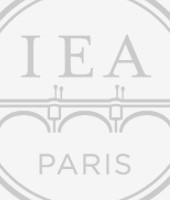Increasing children’s water consumption: an experiment in nudging
avec Sabine Boesen-Mariani (Danone Nutricia Research, Sensory & Behavior Science) et Bradley Franks (London School of Economics and Political Science, Department of Social Psychology)
Intervention dans le cadre de la H4H 6th Annual Hydration Conference. Ce colloque international, organisé avec le soutien de Danone, réunit principalement des médecins et des acteurs de la santé publique.
Présentation de la communication:
In Poland, as in many countries, children drink a smaller amount of plain water than recommended and large amounts of sweet drinks. Excessive consumption of sweet beverages have been linked to health problem such as obesity and also creates habits that may be detrimental to their health as adults. Hence the idea to change these drinking patterns into healthier habits early.
Habitual behaviours are not the result of the subject’s will or automatisms alone. They are usually supported, nudged and funnelled by a 3-layered technico-psycho-social “installation” which includes affordances in the environment, embodied competences in the person and social influence. Objects and other people trigger and scaffold the behaviour. As described by Installation Theory, sustainable behaviours are the ones scaffolded by such 3-layered installations; therefore to change the behaviour durably the whole installation must be changed, not just the embodied components in the subjects. Knowing what they should do is not enough for subjects to actually do it; they must be nudged into the behaviour by the installation. This is why persuasion campaigns alone have limited effect.
We conducted a one-year longitudinal field experiment in Poland comparing the impact of three treatments on the family installation for drinking, to help children develop sustainable increased plain water consumption habits. Beverage consumption of 334 children and their carers were recorded over one year using on-line 7 days specific fluid diaries. We compared Control to three Treatments and their combination addressing the three layers of the installation: Information on benefits of water, Placement of free small bottles of still water, giving access to an on-line forum providing Community support and influence on water consumption.
Placement of water had the strongest effect, much more than Information alone. All treatments significantly increased water consumption: plain water was substituted for other beverages. The effects remained, although decreased, 6 months after the end of treatments.
|
|
|
Context and actuation of selves: an empirical investigation 24 February 2014 - 24 December 2014 |
|
|

